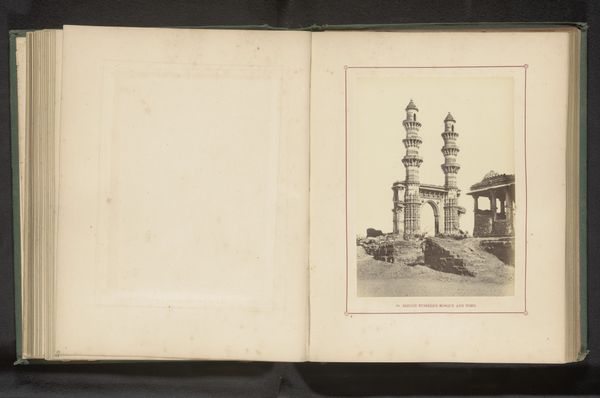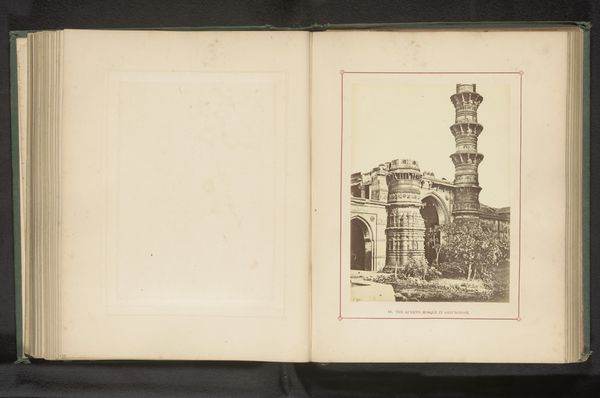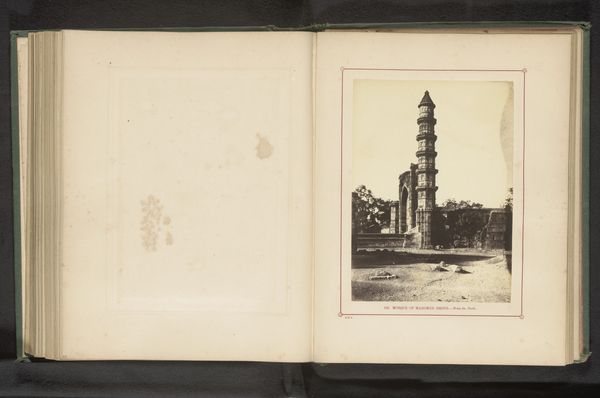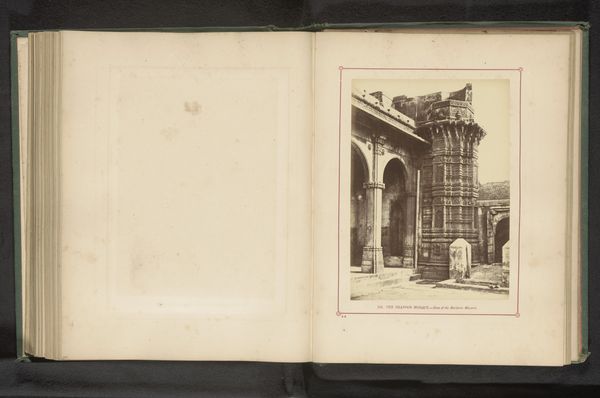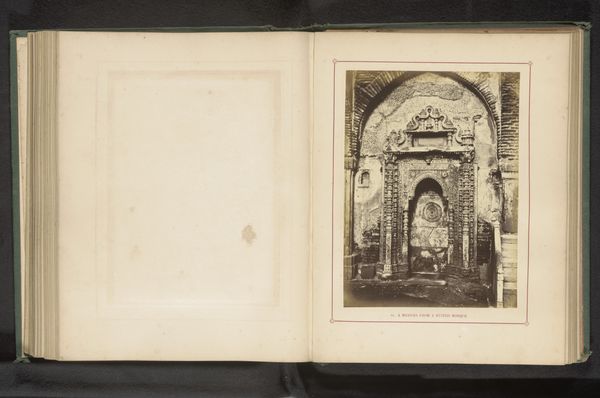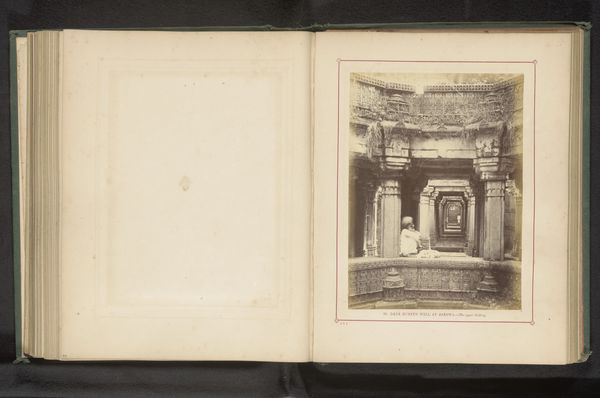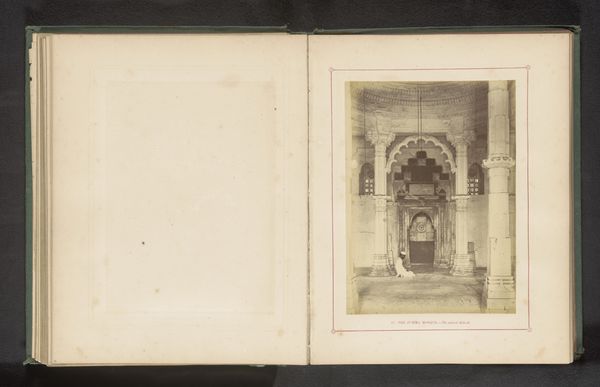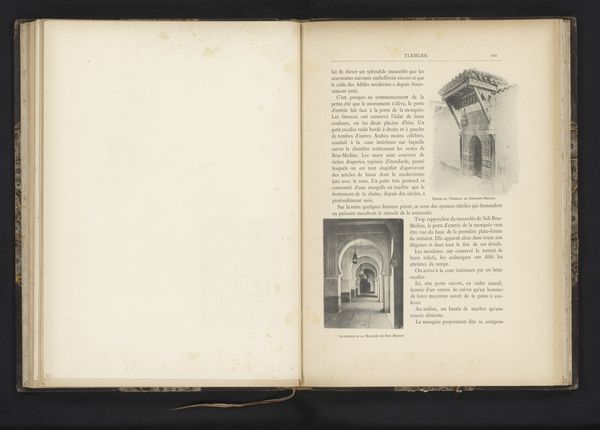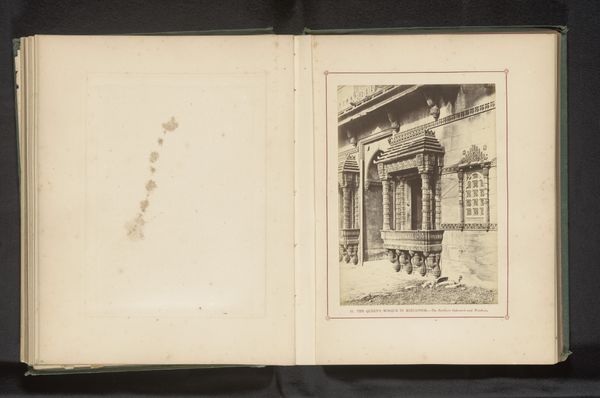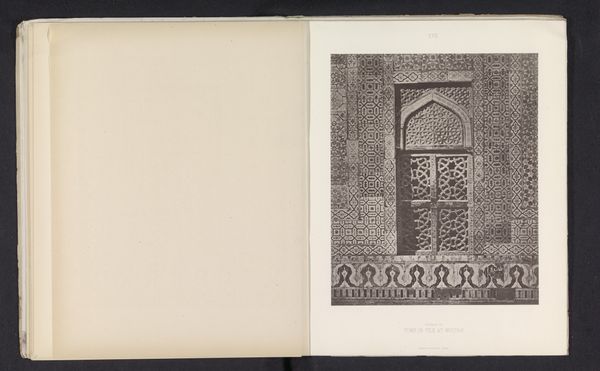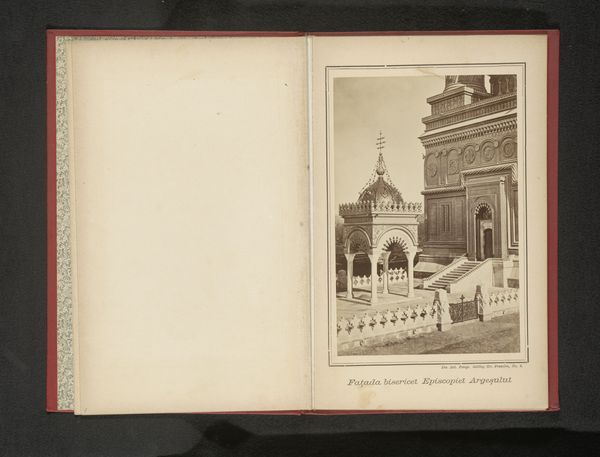
print, photography, architecture
# print
#
landscape
#
photography
#
geometric
#
ancient-mediterranean
#
cityscape
#
islamic-art
#
architecture
Dimensions: height 190 mm, width 136 mm
Copyright: Rijks Museum: Open Domain
Curator: Before us is "Ruïne van een moskee bij een treinstation in Ahmedabad," a photograph taken before 1866 by Thomas Biggs. What strikes you first about this image? Editor: The texture, definitely. You can almost feel the aged surface of the stone. The contrast of the minarets against the flat land speaks volumes about material and structure in landscape and social impact, doesn’t it? Curator: Absolutely. This work is part of a larger colonial archive, documenting British India. Its focus on the 'ruin' reflects the common 19th-century European fascination with decaying empires, orientalism, and perhaps more pertinently here, colonial power. The photographic print itself becomes a tool of documentation but also, of representation. Editor: Indeed. But I’m also thinking about the labor involved. Consider the transport of materials, the local techniques used to erect the mosque, the sheer manpower! Then consider Biggs lugging his camera and developing equipment to document the ruin, further exploiting local resources. Curator: That brings up interesting points of consideration for us, given Ahmedabad’s complex social and political past, and the visual culture it produced. This ruin doesn’t just signify architectural decay. It speaks of power struggles and cultural shifts. It makes you consider the communities that once prayed here, displaced in a colonial narrative being captured through Biggs's lens. Editor: And let's not forget the circulation of this image. This wouldn't be viewed by the Ahmedabad community itself, but by some London gentleman sipping his tea, gazing at a faraway land captured by foreign technology. What does it mean when architecture shifts from devotional space to photograph on paper traded and consumed by foreign audiences? Curator: It's an active reshaping, literally reprinting and restructuring of a cultural landscape under the gaze of colonial powers. Thank you, by re-examining Biggs' photograph we revealed some insights into its making, dissemination and representational strategies within its period. Editor: Right, it's not just an aesthetic capture, but a material transformation imbued with complex power dynamics and global ambition of both past and present.
Comments
No comments
Be the first to comment and join the conversation on the ultimate creative platform.
